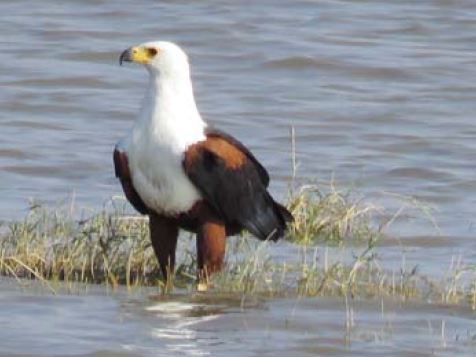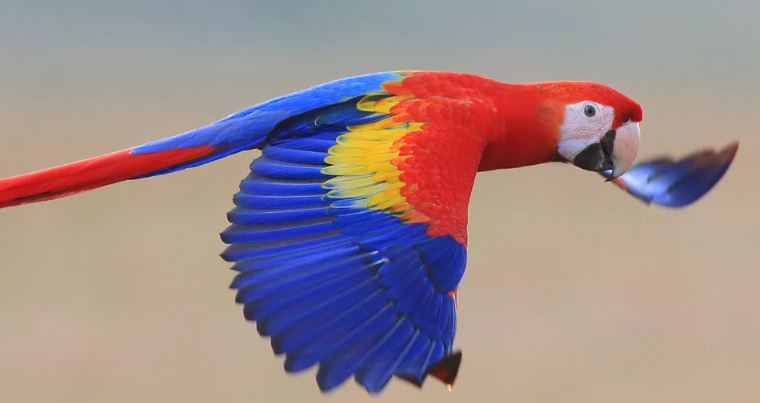African Fish Eagle facts in the World: Excellent and Awesome Information
African Fish Eagle facts -Haliaeetus vocifer Are you ready to dive into the fascinating world of the African Fish Eagle? Get ready to be amazed by this majestic bird of prey that rules the skies and the waters of Africa with its impressive hunting skills and distinctive call.
We now have a video about incredible South African Birds with Stunning Wildlife Footage:


Introduction:
The African Fish Eagle, also known as the Haliaeetus vocifer, is a powerful and iconic bird that can be found near rivers, lakes, and coastlines throughout sub-Saharan Africa. With its striking white head, chestnut body, and piercing yellow eyes, this bird is a sight to behold in the wild.
Habitat and Behavior:
The African Fish Eagle is a master of both the air and the water. It can often be seen perched high in trees overlooking bodies of water, waiting patiently for its next meal. When it spots a fish near the surface, it swoops down with incredible speed and precision, using its sharp talons to snatch the fish out of the water.
Diet and Hunting Skills:
As its name suggests, the African Fish Eagle primarily feeds on fish, but it is also known to eat other small animals such as frogs and birds. Its hunting skills are unmatched, as it can spot a fish from high above and dive down at speeds of up to 100 miles per hour to catch its prey.
Breeding and Conservation:
The African Fish Eagle is known for its impressive courtship displays, which involve aerial acrobatics and calling out to potential mates. Once a pair has bonded, they will build a large nest near water where they will raise their young. Unfortunately, habitat loss and pollution have threatened the populations of African Fish Eagles in some areas, making conservation efforts crucial to their survival.
Taxonomy:
The African fish eagle is a species placed in the genus Haliaeetus (sea eagles). Its closest relative appears to be the critically endangered Madagascar fish eagle (H. vociferoides). Like all sea eagle species pairs, this one consists of a white-headed species (the African fish eagle) and a tan-headed one (Madagascar fish eagle).
I have seen my first African Fish Eagle at Pilanesberg.
Distribution and habitat:
This species is still quite common near freshwater lakes, reservoirs, and rivers, although they can sometimes be found near the coast at the mouths of rivers or lagoons. African fish eagles are indigenous to sub-Saharan Africa, ranging over most of continental Africa south of the Sahara Desert. Several examples of places where they may be resident include the Orange River in South Africa and Namibia, the Okavango Delta in Botswana, and Lake Malawi bordering Malawi, Tanzania, and Mozambique.
The African fish eagle is thought to occur in substantial numbers around the locations of Lake Victoria and other large lakes in central Africa, particularly the Rift Valley lakes. This is a generalist species, requiring only open water with sufficient prey and a good perch, as evidenced by the number of habitat types in which this species may be found, including grassland, swamps, marshes, tropical rainforest, fynbos, and even desert-bordering coastlines, such as that of Namibia. The African fish eagle is absent from arid areas with little surface water.
African Fish Eagle facts – Reproduction:
African fish eagles breed during the dry season when water levels are low. They are believed to mate for life. Pairs often maintain two or more nests, which they frequently reuse. Because nests are reused and built upon over the years, they can grow quite large, some reaching 2 m (6.0 ft) across and 1.2 m (3.9 ft) deep. The nests are placed in a large tree and are built mostly of sticks and other pieces of wood.
The female lays one to three eggs, which are primarily white with a few reddish speckles. Incubation is mostly done by the female, but the male incubates when the female leaves to hunt. Incubation lasts for 42 to 45 days before the chicks hatch. Siblicide does not normally occur in this taxon, and the parents often successfully rear two or three chicks. Chicks fledge around 70 to 75 days old. Post fledgling dependence lasts up to three months, where after the juveniles become nomadic and may congregate in groups away from territorial adults. Those that survive their first year have a life expectancy of some 12 to 24 years.
African Fish Eagle facts – Conservation:
This species is listed as least concern by the IUCN. The estimated population size is about 300,000 individuals with a distribution area of 18,300,000 km2. Main threats include habitat degradation caused by pollution from human activities like agriculture or industrialization as well as overfishing practices that deplete fish stocks in their preferred habitats.
BirdLife South Africa has selected the African Fish Eagle as the Bird of the Year for 2012.
Conclusion:
In conclusion, the African Fish Eagle is a true symbol of Africa’s wild beauty and untamed spirit. With its stunning appearance, impressive hunting skills, and important role in the ecosystem, this bird is a treasure worth protecting. So next time you find yourself near a body of water in Africa, keep an eye out for the majestic African Fish Eagle soaring overhead. You never know what wonders of nature you might witness.
Come get to know me on Facebook:


